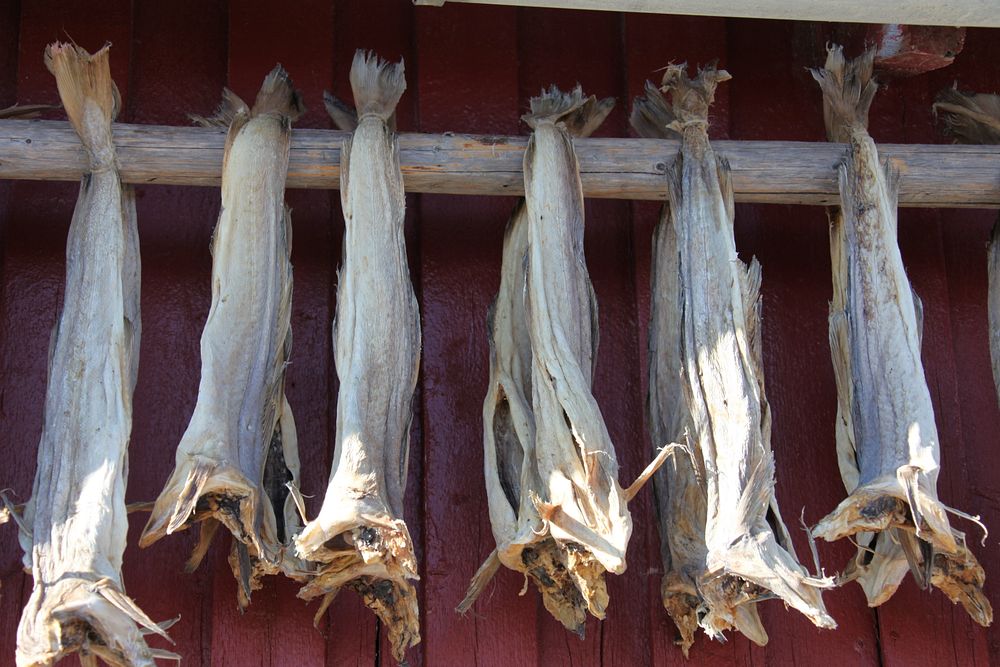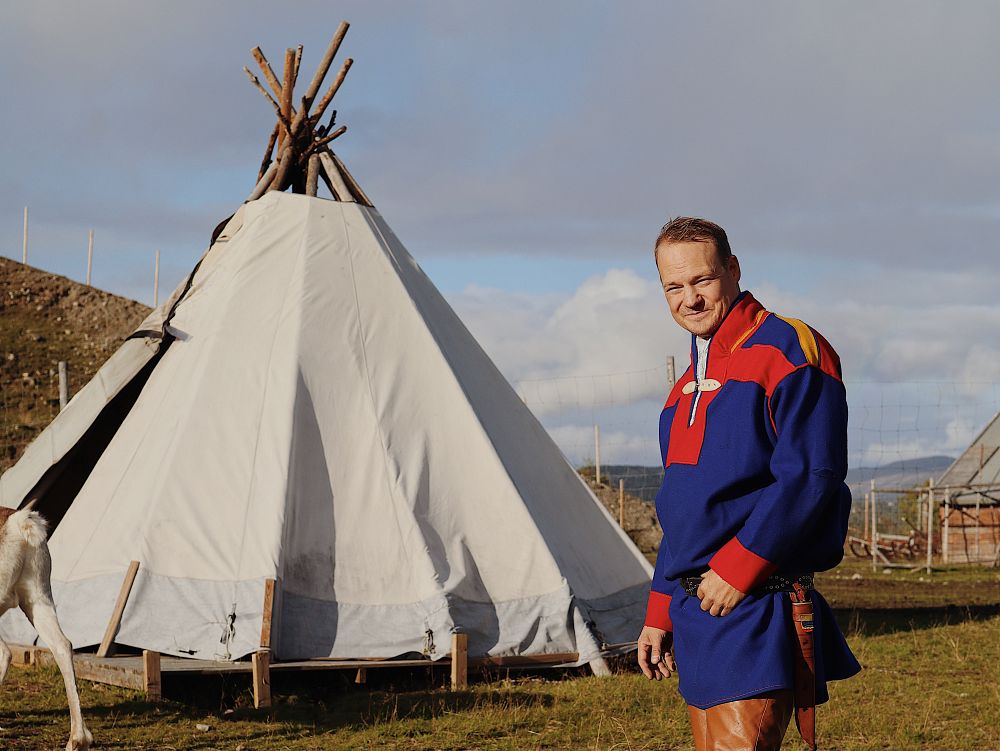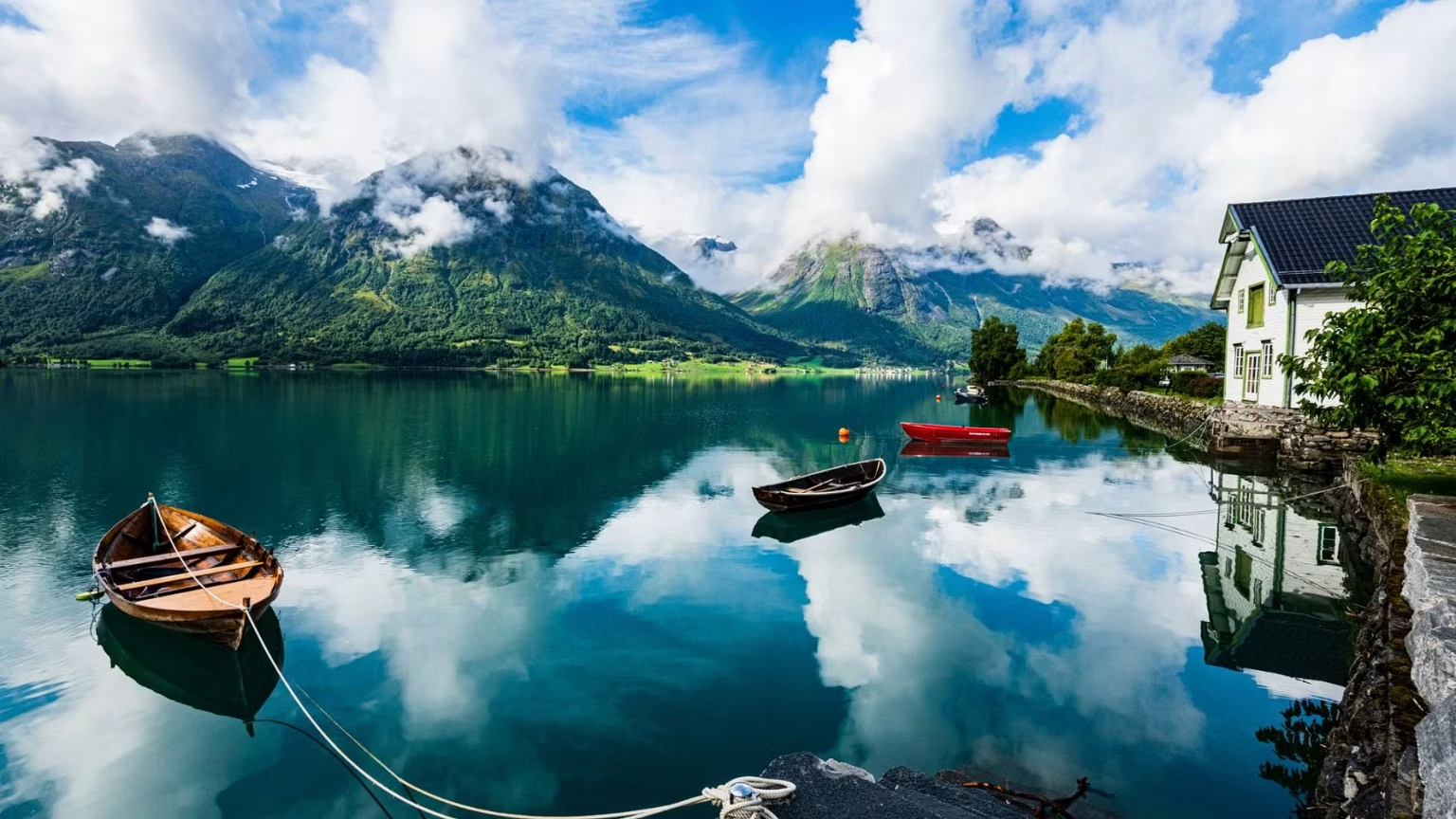From the midnight sun in the north to the dramatic fjords of the west, few places on earth offer such diverse landscapes as in Norway. Northern Norway Tourism Board and Fjord Norway combine dramatic scenery, coastal history, and northern adventure for an unforgettable experience. With Widerøe Airlines providing flights from Dublin, Brussels, Aberdeen, München and Hamburg to Bergen, with direct onward connections to Bodø and Tromsø, exploring Norway’s fjords and the Arctic North has never been easier.

A History Shaped by Trade and Coastal Life
Norway’s history of seafaring trade has long connected the regions. Since the Middle Ages, they have supported trade routes that linked distant shores. Bergen, a key city in Norway, became the gateway for dried fish from the north, particularly the prized stockfish from Lofoten, which was traded widely across Europe. This trade helped establish Bergen as a busy centre, with Hanseatic merchants playing a key role in its importance in global trade.
The Pomor trade further highlighted this connection, with Northern Norway’s fishermen exchanging fish with Russian traders from the White Sea. This relationship mirrored the open, seafaring nature of both regions and contributed to the vibrant coastal communities we see today.

Life along the coast has shaped a unique cultural identity in both Northern Norway and the Fjord region, where maritime traditions and fishing communities continue to reflect Norway’s heritage. For over a century, Hurtigruten — often called the ‘national highway of the coast’ — has connected these coastal communities, from Bergen’s ports to remote fishing villages in the north. Once a lifeline for trade and cooperation, Hurtigruten and similar routes now offer visitors a way to experience Norway’s coastal landscapes and culture firsthand.
Culinary Treasures
From ocean to table, Norway’s coastal regions are, not surprisingly, celebrated for their fresh, local seafood. They offer a wide range of delicacies, from cod and stockfish to regional specialties. In Northern Norway, traditional dishes like tørrfisk (stockfish) and rakfisk (fermented fish) are integral to the region’s long history of preserving fish for the harsh winters. Meanwhile, the West Coast is renowned for dishes such as klippfisk (dried and salted cod) and sursild (pickled herring), all reflecting the region’s maritime heritage.

Food is a vital part of the Norwegian experience, with each region offering distinct culinary traditions that give travellers an authentic taste of Norwegian culture. Many dishes are prepared much as they were in the past, but with a modern touch, highlighting sustainable and seasonable ingredients.
The Charm of Contrasting Landscapes
Northern Norway and the western part of the country share attractions such as fjords, glaciers, and spectacular coastal landscapes that draw tourists each year. However, they differ in several noticeable ways. Fjord Norway is renowned for its deep, long fjords like Sognefjord and Geirangerfjord, where towering mountains rise dramatically from the water’s edge, creating some of the most iconic views in the country. In contrast, Northern Norway has a more varied landscape, with fjords, islands, and wide plateaus. This region spans the counties of Nordland, Troms, and Finnmark, offering a mix of coastal beauty and wild landscapes that attract adventurers and nature lovers.

Seasonal contrasts also make these regions unique. In Northern Norway, the midnight sun lights up summer nights, while the aurora borealis fascinates winter visitors. Meanwhile, the west enjoys mild winters and cooler summers due to the Gulf Stream, offering travellers a scenic playground year-round. The mix of landscapes, from fjords to Arctic shores, offers a unique chance to experience nature in its purest form.
Cultural heritage and living traditions
Alongside these natural wonders, both Northern Norway and the Fjord Region offer travellers a glimpse into Norway’s past and present. In the far north, Sámi culture thrives, deeply rooted in the Arctic landscape. For thousands of years, the Sámi people have lived in harmony with this rough environment, and today, visitors can experience and learn more about their traditions through art, music, and unique activities like reindeer sledding.

As you travel along the West Coast, fishing remains central to coastal communities, with many locals still using traditional methods to gather the sea’s resources. This connection to the ocean invites travellers to experience the rhythm of life that has shaped these communities for generations. Further south, traces of indigenous culture reflect Norway’s ties to its earliest inhabitants. Although the Sámi culture is most prominent in the north, similar themes of resilience, resourcefulness, and a close relationship with nature have also shaped the traditions of coastal communities in the Fjord Region.
Both regions have preserved their traditions while embracing modern values, offering visitors a place where the past and present are intertwined.
Where Urban Life Meets Nature’s Wonders
From the northern reaches of the Arctic to the iconic fjords, Norway offers experiences as diverse as its landscapes. While famous for its natural beauty, Norway’s cities also offer a rich mix of culture, history, and modern attractions
In Bergen, you can explore the colourful wooden houses of Bryggen, a UNESCO World Heritage site that dates back to the 14th century, offering a fascinating glimpse into the city’s Hanseatic past. Stroll through narrow alleyways, explore the lively fish market, or take a scenic ride up Mount Fløyen for panoramic views of the city and its stunning surrounding fjords. A perfect balance of urban life and nature.
Tromsø, known as the “Gateway to the Arctic” and nicknamed “Paris of the North”, offers modern architecture and rich cultural experiences alongside winter activities like dog sledding and whale watching. Not to overlook the fact that they specialise in Northern Lights tours.
Whether you’re looking for adventure, relaxation, or cultural experiences, these regions invite you to discover the raw beauty of Norway. With a blend of urban charm and raw nature, visitors can easily enjoy both city life and the quiet outdoors that Norway is known for.

